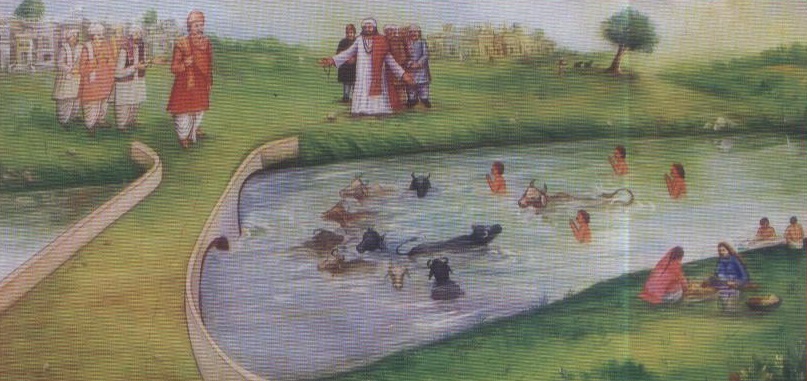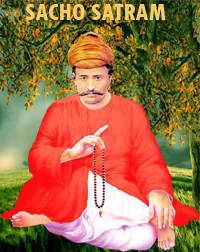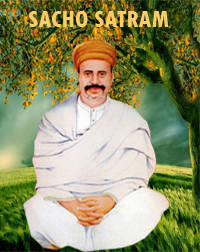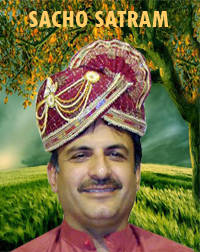
Every day, Sant Sai Satramdas Sahib would visit the samadhi sahib of his beloved father, Aad Satguru Sant Sai Khotaram Sahib, which was located a short distance away from Raharki Sahib.
Sant Sai Satramdas Sahib would bring prasad, flowers, agarbattis, food, and water for animals and birds to the Samadhi Sahib. He would also perform shabad kirtan there. At the time, there were no dams to save and store water. Occasionally, the overflowing water from the Sindhu river would enter the land, making it soft and ideal for sowing chickpeas or peas, as the soil had good water retention capacity and abundant growth. However, for the rest of the year, there was a scarcity of water which caused difficulties for the local people and the animals and birdsIn the past, people had to travel long distances to get water from wells for drinking and their daily needs. This caused significant challenges for men, women, and children who had to take their pets along to fetch water. Everyone felt helpless, and the situation was dire.
One day, as Sant Sai Satramdas Sahib was heading towards the samadhi sahib of his father, Sant Sai Khotaram Saheb, a Darvesh Menahal Fakir from Raharki Sahib approached him. Along with Hindus, Muslims, milkmen, shepherds, and other local people, the Fakir pleaded with Sant Sai Satramdas Sahib to shower his blessings and pray for an end to the water scarcity problem that was causing great distress.
Moved by the people’s plight, Sant Sai Satramdas Sahib took his stick and drew a line on a specific area of the land, declaring that a river would soon emerge from that spot. This river, he said, would bring joy to all living beings in the city and even those in far-off places.
Sant Sai Satramdas Sahib also predicted that the river would bring pure joy, happiness, peace, and prosperity to all living beings in the areas through which it flowed. He added that the land would become fertile with big reservoirs of water, and the river would be named after the Darvesh Menahal who had asked for this blessing for the people’s benefit.
Soon after, the irrigation department of the British government surveyed the area and chose the exact spot that Sant Sai Satramdas Sahib had marked to build a canal for utilising water from the Sindhu river. The canal was named after the Darvesh Menahal Fakir and called the river Mahi, which flows through the heart of the blessed village of Raharki Saheb. The river brought the prosperity and abundance that Sant Sai Satramdas Sahib had predicted, and the people rejoiced in their newfound access to water.
As predicted by Sant Sai Satramdas Sahib, the river Mahi / Mahi wah flows through the center of Wadi Devri (big Devri) Sahib and has made the land fertile with abundant green grass and food crops for the people living there. Its waters have brought happiness and prosperity to all living beings, thanks to the grace of Sant Sai Satramdas Sahib.
When the canal was finally built, Darvesh Menhal had its inauguration ceremony performed by Sant Sai Satramdas Sahib himself, with the presence of British officers and local people. Menhal Darvesh expressed his gratitude towards Sant Sai Satramdas Sahib and acknowledged that it was his prediction that made the prosperity of all living beings possible. He prayed for Satguru Shehenshah to shower his blessings upon everyone, including birds and animals, whose thirst the river quenched.
In summary, the river Mahi wah was a dream come true for the people of the region, thanks to the prediction and blessings of Sant Sai Satramdas Sahib, who had marked the spot for the river’s construction.



